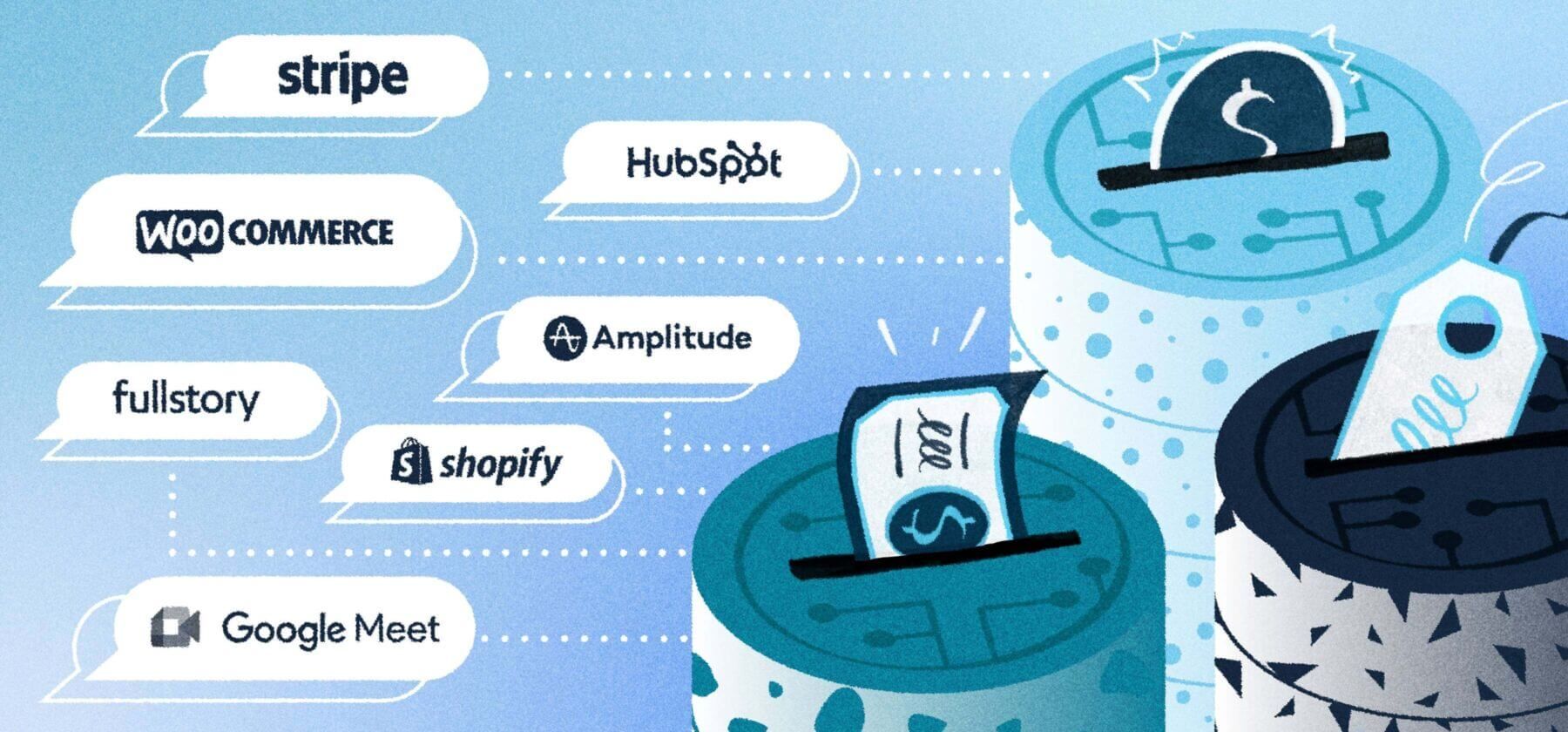
Creating excellent customer experiences with the right e-commerce tech stack
Main illustration: Lily Wang
The e-commerce landscape has grown exponentially since 2020, with experts predicting that the pandemic accelerated transformation of the digital space by up to five years.
With lockdowns preventing in-store experiences, shoppers have gravitated towards brands that can provide the best online experience possible. And, as society reopens, it is vital to maintain ease of movement between in-store and online channels – not just for your customers, but for your teams.
Many moving parts mean omnichannel e-commerce experiences can be tricky to get right. So, the first step towards creating the ultimate customer experience (CX) is ensuring that all your tools work in synergy with each other – minimizing disruptions to your team and your shoppers. Great e-commerce experiences for customers are built on speedy responses, instantaneous gratification, and convenience – this is no easy feat to provide. Therefore, your team needs to be equipped with the right tools to work efficiently behind the scenes. This is where having the right tech stack comes into play.
1. Activate proactive engagement across your e-commerce site
If the pandemic has taught us anything, it’s how quickly things can change and how fast certain information can become outdated. Luckily, consumer behavior has shifted towards being more understanding since the pandemic, so long as communications are clear. In fact, 75% of consumers were more likely to favor brands that exhibited clear and frequent communication during the pandemic. But what’s the best way to stay ahead of these expectations? Proactive engagement. This strategy empowers you to pre-emptively deliver targeted, personalized messages and support via messenger-based channels. Anticipating issues can really minimize them or even nip them in the bud completely.
Fire up Fullstory to fight frustrations
From a support perspective, creating FAQs and knowledge hubs should definitely be your first port of call – but what if you could reach your customer before frustration gets the better of them? No, you don’t need to be psychic – maintaining a joyful CX is made easier with platforms like FullStory. When integrated with Intercom, you can uncover what happens when a customer visits your site or app, and how to proactively improve their experience. Address things like “rage clicking” directly with real-time, outbound messages to your customers to help them preemptively resolve issues. Sense their frustration? Act on it.
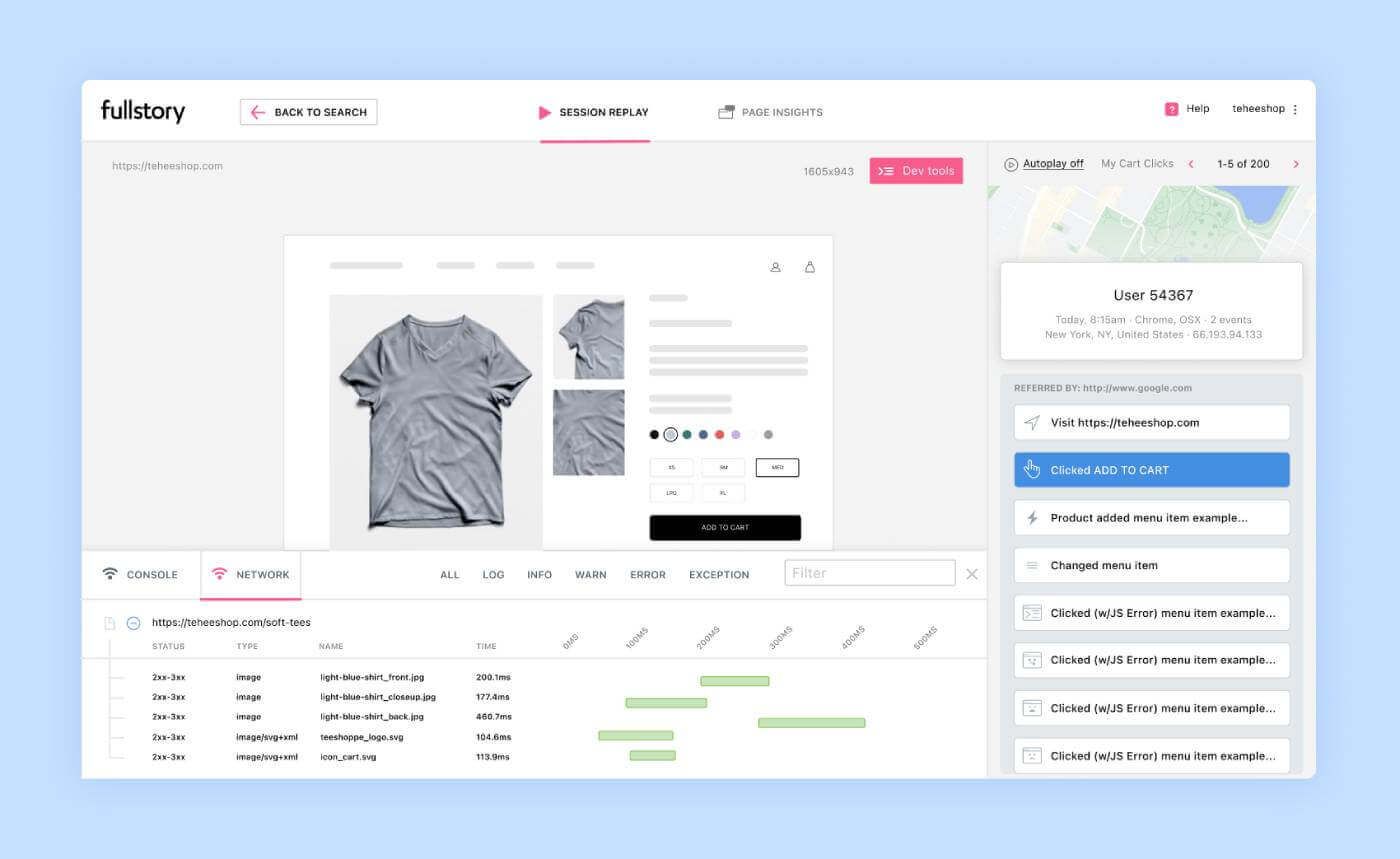
“This kind of messaging needs to be personalized – otherwise, you’re missing valuable conversion opportunities”
Messaging that’s meant to be
Features like outbound messages or banners are not just great for support, but marketing and sales teams can also reap the rewards of a proactive approach. Timely, curated, in-app messages and banners can be used to entice prospects from a free trial onto a pro plan, encourage shoppers to add a little more to their cart for free delivery, or even create an account when they arrive to your website (i.e. not JUST when they’re at the checkout).
With that being said, this kind of messaging needs to be personalized – otherwise, you’re missing valuable conversion opportunities. 45% of online shoppers say they’re less likely to purchase from a brand after an unpersonalized experience, so how can you ensure your proactiveness messages are still personalized?
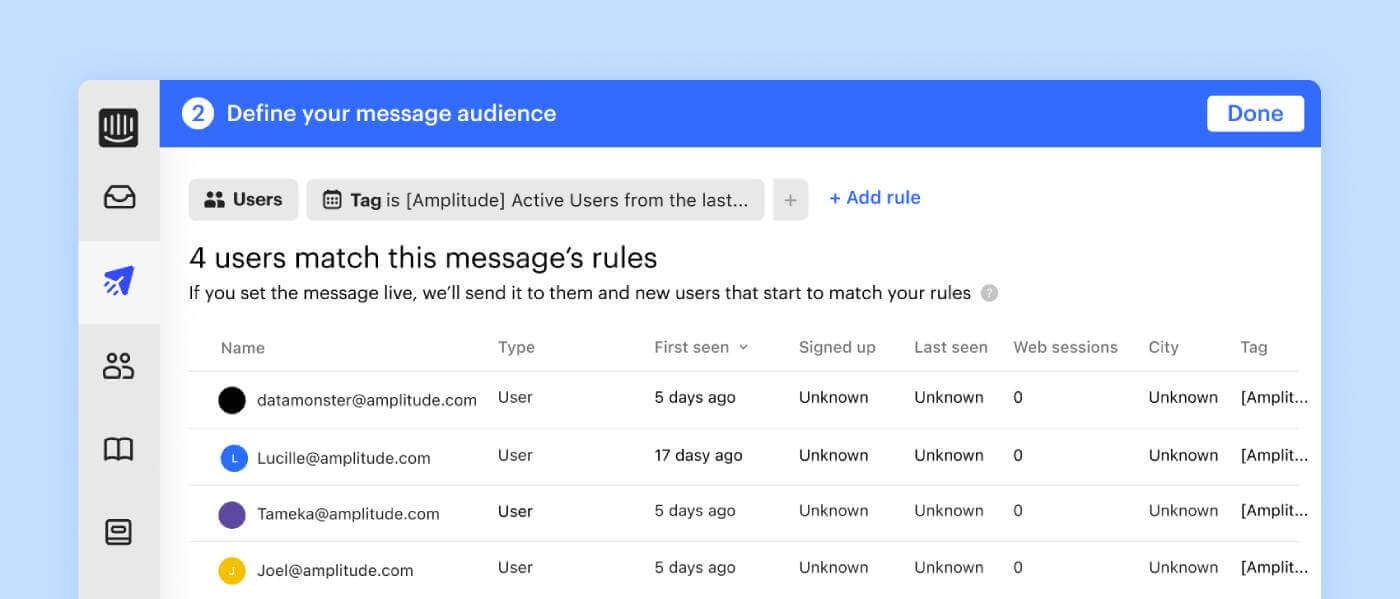
Amplitude is one such tool that can help you target customers with personalized messaging campaigns based on how they’ve interacted with your website and their lifecycle timing. Segmenting your audience by their behaviors (such as what page they’re browsing or when they’re active) will provide you with key insights into what motivates them to buy from you. Getting to know your customers becomes easier, empowering you to provide them with a bespoke experience they’ll come back for again and again.
2. The power of self-service
E-commerce is a 24/7 service. Consumers can indulge in retail therapy while catching up on Netflix or even book their next holiday on their commute. With that always-on availability comes a consumer expectation for always-on customer service. But when you place the power to resolve simple queries in the customer’s hands, those expectations become easier to meet. This ability to instantly self-serve – where otherwise frustration may have built – increases the likelihood of retention and increased conversions. Plus, studies reveal that customers prefer to self-serve rather than speak to a support rep at all.
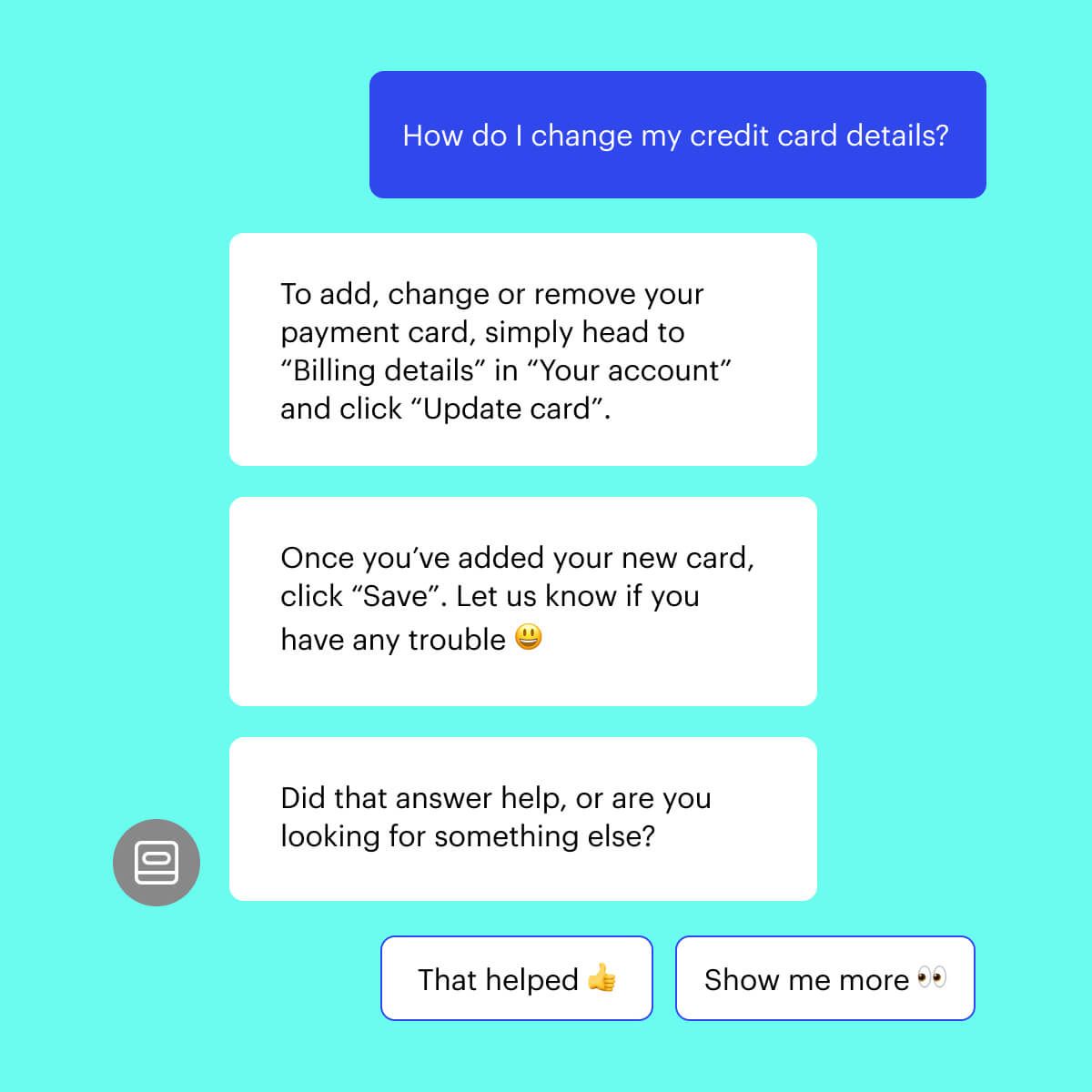
Take our Resolution Bot for example, which can help speed up self-service by offering relevant answers based on what customers are typing – before they even hit the enter key. FAQs are easily and quickly taken care of, accelerating resolution times for customers even if your team is busy or offline. Even better, however, is that messengers can be used to complement almost any part of the customer journey.
Straightforward order tracking
As a customer, the anticipation of an online order can be too much to bear. We’ve all been there – eagerly window watching for the postman despite only placing the order at 10pm the previous night. Online order tracking helps to minimize customer anxiety and buyer remorse – nourishing the customer experience between the dispatch and delivery phase.
Even when it comes to individual orders, automation can be used to gratify your shoppers. Connect the Shopify app with Intercom and customers can check their order status right inside the Messenger, without ever having to reach out to your team. This is the fastest way for your customers to self-serve and check the status of their orders.
Your team can also view order details right from the Intercom Inbox, so that queries can be quickly handled without needing to click anywhere else for order information.
Pain points made powerful
Processing payments and refunds can be trickier to automate as they require access to individual details. However, with the right tech stack, your team can handle even complex payment problems with ease.
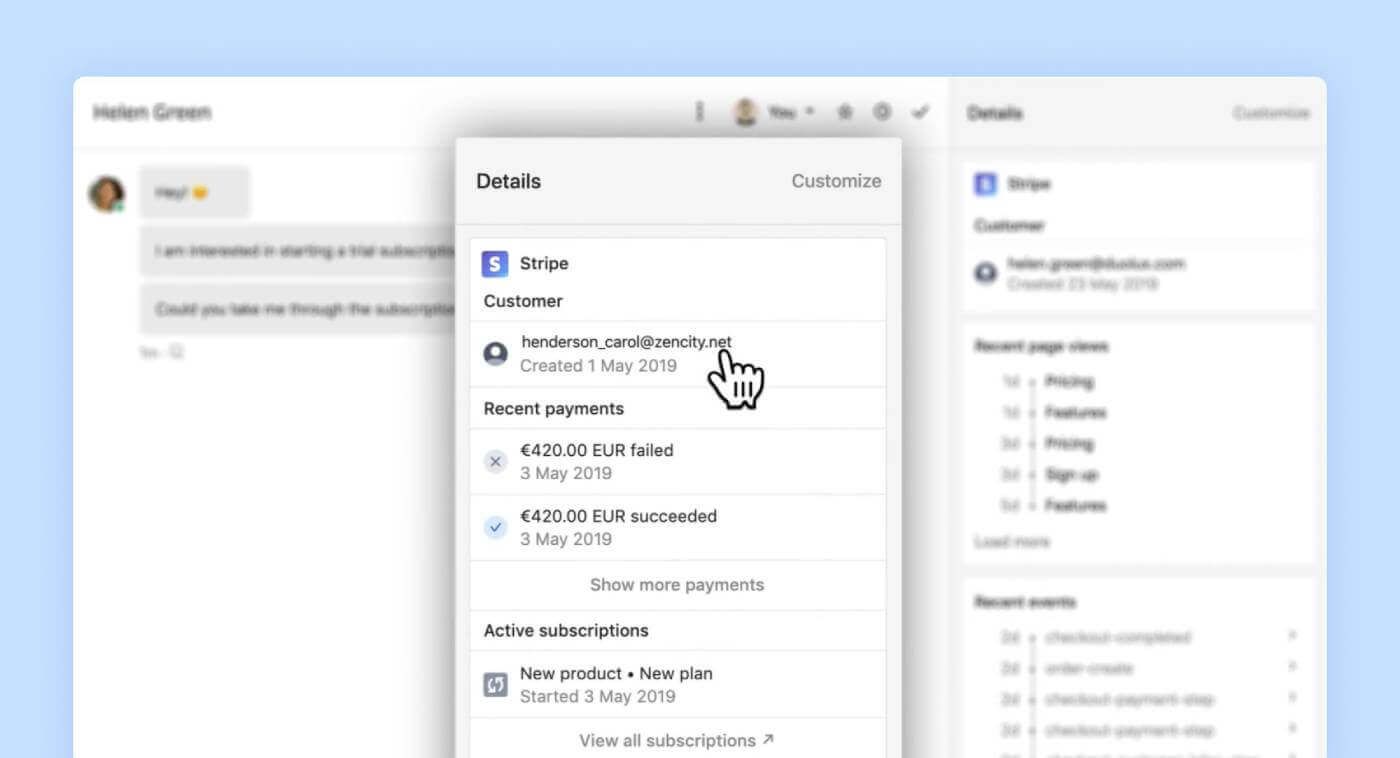
Payments become much more flexible to manage with integrations such as Stripe. This end-to-end payment process removes the need to fumble around for customer plans or payment details. When integrated with our platform, your sales and support teams can initiate subscription upgrades, accept secure payments via the Messenger, and see their query history. This empowers them to boost conversions with ease and maintain a positive customer relationship.
But what happens if it’s not smooth sailing once your customer has received their package? If you have a disgruntled shopper, the best course of action is to minimize any further frustrations.
“No matter how big or small their ask is, your customer receives an answer as quickly as possible and remains happy and loyal”
Apps like WooCommerce allow you to quickly remedy situations like this and maintain that positive relationship with your customers. Support team members can view detailed customer information and order history, issue refunds live from the Intercom Inbox, or even issue coupons to customers to diffuse any situation.
No matter how big or small their ask is, your customer receives an answer as quickly as possible and remains happy and loyal.
3. Help your team, help your customers
As an e-commerce business, it’s never been more important to empower your teams. Between rising customer expectations and “The Great Resignation”, leaders in this field will know the knock-on effect nurturing their own team has on customer success. As Richard Branson once said, “If you look after your staff, they will look after the customers. It’s that simple.”
But with ease of access to e-commerce, keeping up with skyrocketing expectations can be tricky. Obviously being switched on 24/7 is not humanly possible, so how can your team meet (and exceed) those expectations without burning out?
Out of office, but not out of mind
You can set up the Intercom Messenger to not only take care of FAQs, you can also customize it to set customer expectations for when your team will be back online to handle more complex queries. Support is really being supercharged by integrated tech stacks right now, but the entire customer journey stands to benefit 24/7 too. For example, integrating your CRMs such as Hubspot allows you to capture leads day and night, trigger nurture workflows, and enable follow-ups that will help your sales team reach their goals.

And syncing data between your team’s tools in this way increases their efficiency and provides them with the power to offer a complete experience for customers. Regardless of timezones or OOO hours, this functionality provides your team with detailed information on customers, guiding them directly to the information they need.
Replicating an in-store standard online
Sometimes it really is a friendly face that your customer is looking for – the human element of customer service can be hard to beat, especially since the pandemic. In this case, customers may require some quick face-to-face to smooth out certain details of their queries.
Integrating with Google Meet empowers your sales and support teams to seamlessly resolve complex queries with one-click video calling. As customers search for more humanized experiences online, companies such as LG can now provide face-to-face support at scale with this simple process:
- Customers submit a question to Messenger
- Select “talk to someone in store” from the custom bot
- Book a Google Meet call with in-store experts
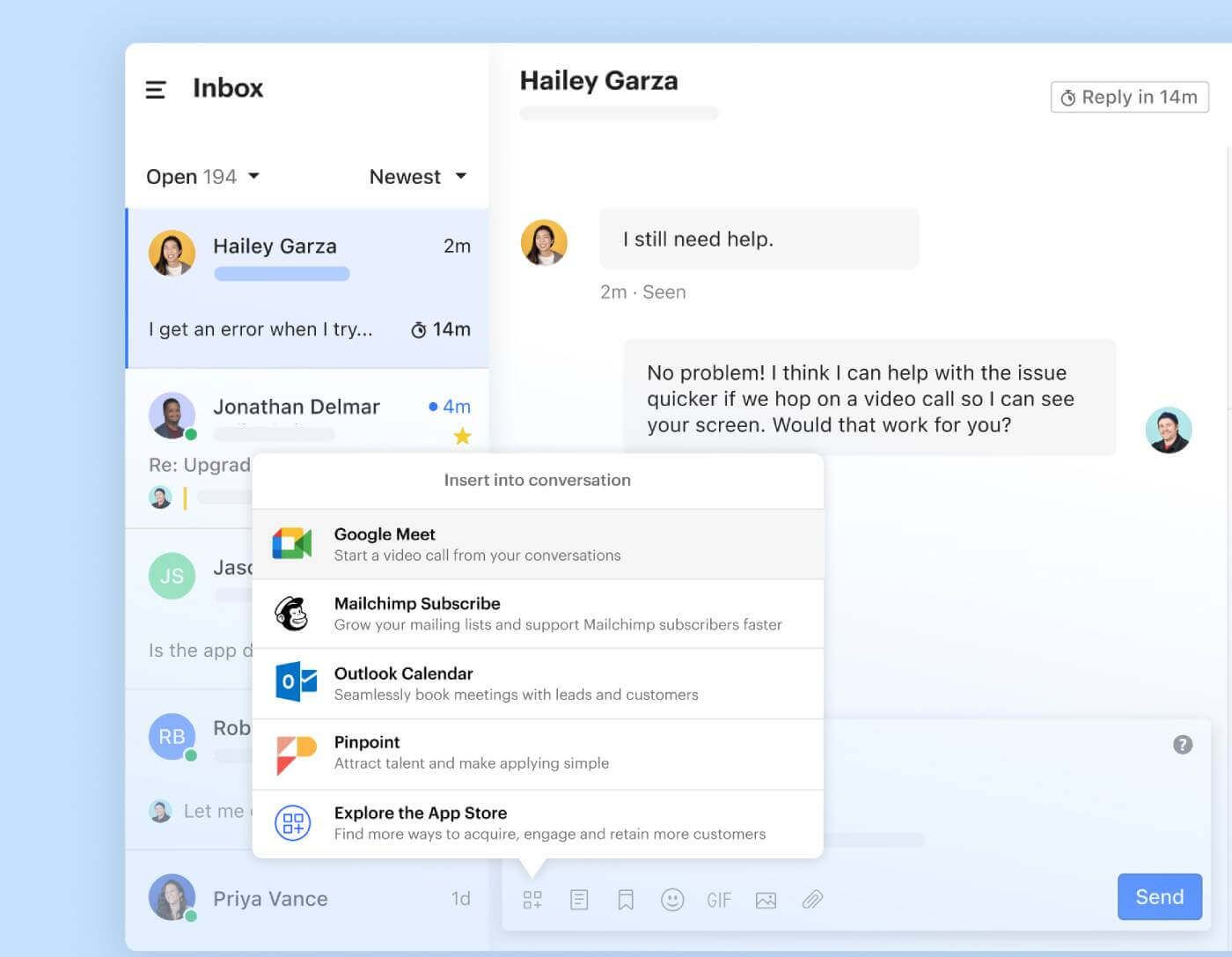
Some shopping experiences, such as buying a new television, can be hard to replicate digitally. But with apps like this, not only can you maintain a fluid CX, but customers can really enjoy that experience of discussing their needs with an expert.
Maintain momentum by bridging your tech stacks
As we’ve said before, no software is an island. The dimensions to e-commerce are increasing, fast – and integrating your tech stack will play a key role in keeping up with that momentum. Instead of switching between tabs or copy and pasting information from one window to another, leading e-commerce companies are investing in one-click integrations for faster, more holistic processes. After all, it’s what goes on behind the scenes that really makes the show go on.
The customer journey is no longer linear either – what starts online can end up in-store and vice versa . Therefore, simplifying your omnichannel approach will become increasingly vital as we move through 2022 and beyond. Engaging your customers throughout their entire journey – from initial consideration to repeat purchases – helps to create an experience they’ll want to come back to again and again. Therefore, with integrated tech stacks, you stand to increase revenue and customer retention and even impact your brand awareness by warranting some glowing reviews.







